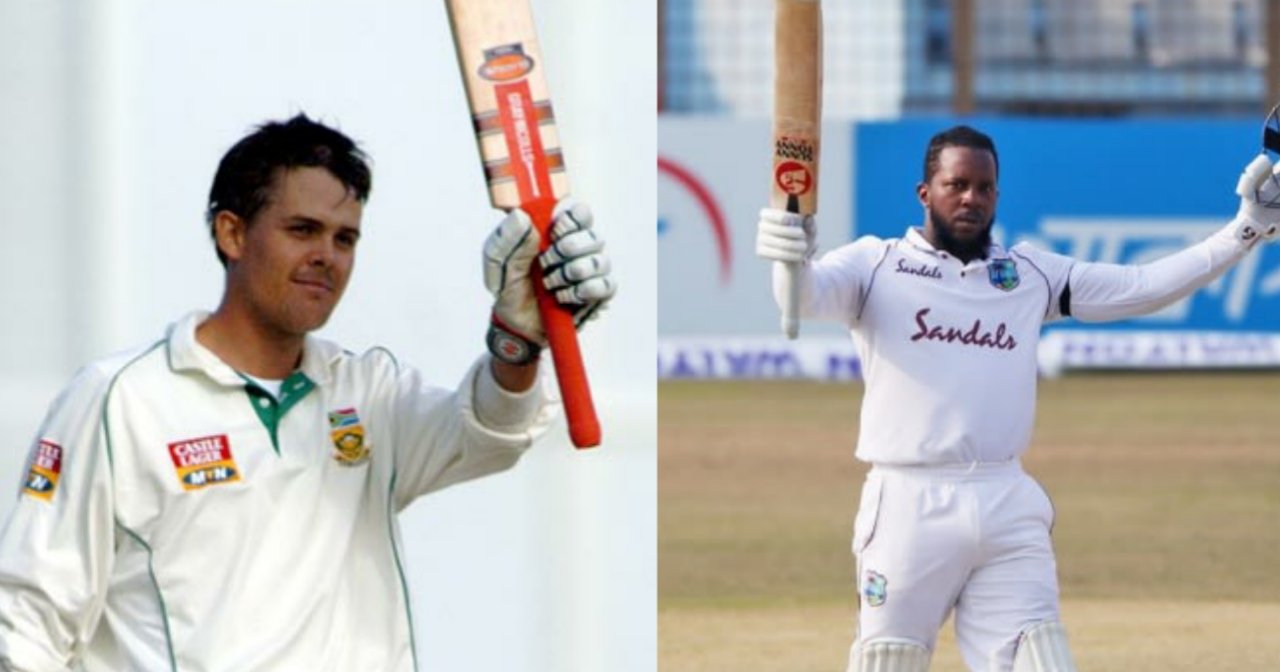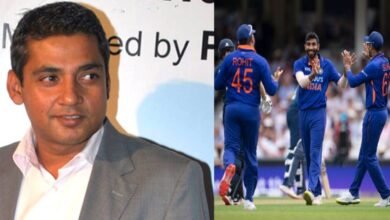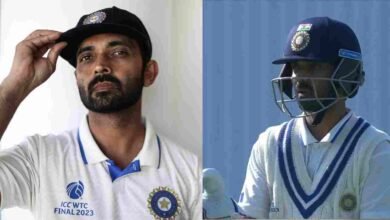7 Batsmen to score a double century on Test debut

Test cricket is the oldest and most difficult format in the history of the game. Both the batsmen and the bowlers have to toil hard to earn every bit of it at the Test arena. Given the difficulty level of the format, batsmen are particularly advised to convert a good start into a significant big score, making a case for themselves. While a half-century or little more than that is enough to content within the white-ball formats, they count as peanuts in the gruelling red-ball format. Thus, the term conversion rate is so overly emphasized in the Test format which points towards the batsman’s efficiency of converting a century into double and if possible also into a triple ton. While it takes many years for some batsmen to meet this criterion, there were others, who managed to achieve it in their debut Test itself. In the below piece, we look at 7 such batsmen, who scored a double century on their Test debut:
1. Tip Foster
A quality right-hand batsman from England, who predominantly batted in the lower middle-order, Foster achieved the massive feat against the Australians during the debut Test at Sydney in 1903. Having restricted the Australians to 285 in their first innings, England, owing to Foster’s 287 and Braund’s 102, posted 577 in the second innings.
With a valuable lead gained, the pressure was now on the hosts to reduce the deficit. They did so with aplomb, piling up 485 in the third innings and setting a target of 194 for England to win. The visitors, who had procured an upper hand right from the first innings, dealt a final blow, chasing the total down on the back of Hayward’s 91 and Hirst’s 60 to go 1-0 up in the series.
2. Lawrence Rowe
An elegant right-hand batsman from the Windies, Rowe scored a double century against the Kiwis during the debut Test at Kingston in 1972. Batting first, Windies posted a mammoth total of 508-4 in their first innings, courtesy brilliant knocks of 214 by Rowe and 163 by Fredericks. Howarth was the pick of the bowler for the visitors with 2-108.
The Kiwis, in reply, managed 386 in the second innings where Turner was the double-centurian, scoring 223. The home team had gained a lead and set their opposition a target of 341 after declaring their innings at 218-3 batting second. The Windies, unfortunately, couldn’t get a result in their favour as the Kiwis reached 236-6 in the fourth innings, ending the game in a draw.
3. Brendon Kuruppu
A wicketkeeper-batsman from yesteryears, Kuruppu compiled this knock against New Zealand during the 1st Test at Colombo in 1987. Batting first, Sri Lanka posted 397-9 in the first innings, owing to scintillating knocks of 201(548) by Kuruppu and 60(157) by Madugalle. Speedster Hadlee picked up 4-102 for the visitors.
In reply, New Zealand too batted with authority, posting 406-5 in their first innings, courtesy knocks of 120(398) by Crowe and 151(240) by Hadlee. The game rightly ended in a draw with both teams showcasing their batting prowess and entertaining the Sri Lankan crowd to the core.
4. Mathew Sinclair
Another hugely talented right-hand batsman for the Kiwis, Sinclair pulled off this milestone against the Windies during the debut Test at Wellington in 1999. Put in to bat first, New Zealand accumulated a mountain of runs on the board, scoring 518-9 in the first innings on the back of a fabulous double century by Sinclair, who scored 214 and Astle’s 93. King was the most effective bowler for the visitors with figures of 4-96.
In return, the Windies couldn’t manage much, getting out for just 179 in the second innings. Cairns was the premier reason behind the same, picking up 5-44. The Kiwis rightly enforced the follow-on and in turn decimated the Windies for 234 where Nash picked 4-38 and assisted New Zealand in winning the contest by an innings and 105 runs.
5. Jacques Rudolph
One of the most pleasing batsmen going around during his playing days, Rudolph was the mainstay for the Proteas at the top of the order. His whirlwind double century knock came against Bangladesh during the 1st Test at Chattogram in 2003.
After dismissing the hosts for just 173 in the first innings, South Africa batted with authority in the second, posting a commanding total of 470-2 on the back of a fabulous knock of 222 by Rudolph and 177 by Dippenaar.
The huge lead obtained was enough to halt a comparatively weak Bangladeshi line-up, who were skittled out for 237 in the third innings, losing the contest by an innings and 60 runs. Paul Adams was the shining light for the Proteas with the ball in hand, picking 5-69 to go with his 5-37 in the first innings.
6. Kyle Mayers
A recent addition to the list, Mayers hammered this memorable double century against Bangladesh during the debut Test at Chattogram in 2021. The hosts while batting first, managed a convincing total of 430 in the first innings, owing to Hasan’s 103 and Islam’s 59. Warrican was the premier wicket-taker for the Windies with figures of 4-133.
The Windies were bowled out for 259 in the second innings and bestowed Bangladesh an invaluable lead in the opening Test. Taking a leaf out of their previous effort, the hosts posted 223-8 in the third innings and set the visitors a target of 395 to chase in the fourth innings.
In a dramatic turn of events, the Windies chased down the mammoth total by 3 wickets, courtesy of an unbelievable effort of 210 by debutant Mayers, who smashed the bowlers to various sides of the ground and was nicely assisted by Bonner with a knock of 86 in the middle order.
7. Devon Conway
The New Zealand cricketer struck a double-century on his debut, that too at the home of cricket – The Lord’s. Born in South Africa, the left-hander made the move to New Zealand a few years ago and arrived on the international scene for the Kiwis in November 2020.
After impressing in the limited-overs, he earned a place in the Test team. Operating against a challenging pace attack comprising the likes of James Anderson and Stuart Broad, Conway held his nerve and made runs despite wickets falling at the other end. Dramatically, he was supported by the team’s No.11 batsman Neil Wagner to get to the double century mark.



